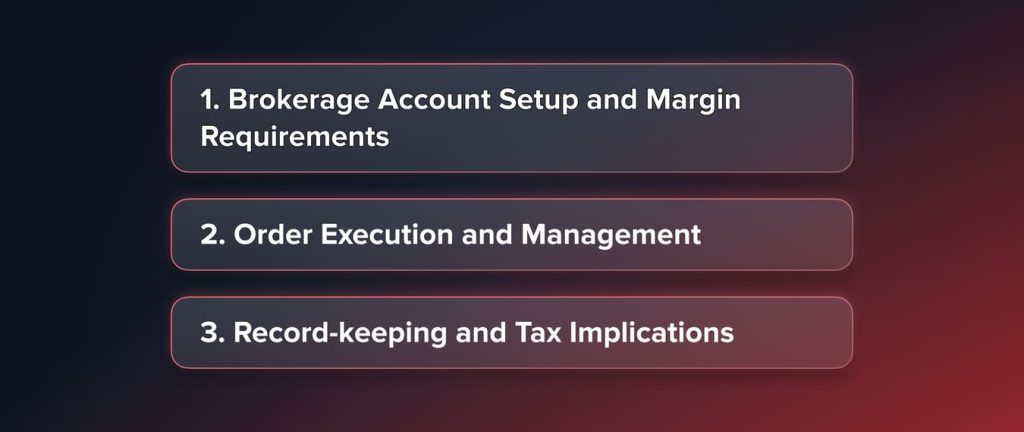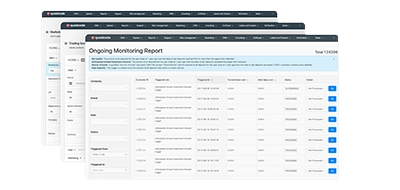กลับ
Contents
กลยุทธ์การดำดิ่งสู่วงล้อ


Vitaly Makarenko
Chief Commercial Officer

Iva Kalatozishvili
Business Development Manager
กลยุทธ์วงล้อคืออะไร?
กลยุทธ์วงล้อ (Wheel Strategy) เป็นกลยุทธ์การซื้อขายออปชันที่ทรงพลังอย่างยิ่ง ซึ่งช่วยให้คุณสร้างรายได้ที่สม่ำเสมอในระยะยาวได้อย่างกึ่งพาสซีฟ กลยุทธ์นี้แตกต่างจากกลยุทธ์ออปชันอื่นๆ ส่วนใหญ่ที่เน้นการเดิมพันแบบมีทิศทางหรือโครงสร้างที่ซับซ้อน กลยุทธ์วงล้อมีแนวทางที่เป็นระบบและเป็นกลางมากกว่า กลยุทธ์นี้ออกแบบมาเพื่อใช้ประโยชน์จากสถานการณ์ที่หุ้นหรือตลาดขึ้น ลง หรือออกข้าง
แก่นแท้ของกลยุทธ์ Wheel Strategy ประกอบด้วยการขาย Puts และ Covered Calls ที่มีเงินสดเป็นหลักประกันอย่างต่อเนื่องในหุ้นหรือกองทุนดัชนีคุณภาพสูงตัวเดียวกัน คุณสามารถรับส่วนต่างจากการขายออปชัน ซื้อหุ้นในราคาลด รับเงินปันผล และได้รับประโยชน์จากการเพิ่มขึ้นของราคาหุ้นในระยะยาว นอกจากนี้ คุณยังได้รับประโยชน์จากการเพิ่มขึ้นของราคาหุ้นในระยะยาว ในขณะที่ยังคงรักษาระดับความเสี่ยงให้อยู่ในระดับที่กำหนด
กลไกของกลยุทธ์วงล้อ
กลยุทธ์ Wheel Strategy เป็นกระบวนการสองส่วนที่เกี่ยวข้องกับการขายออปชันพุตที่มีหลักประกันเป็นเงินสดและออปชันคอลที่มีหลักประกันเป็นเงินสดในสินทรัพย์อ้างอิงเดียวกัน เรามาอธิบายแต่ละองค์ประกอบโดยละเอียดกัน:

1. การขายออปชันพุตที่มีเงินสดเป็นหลักประกัน
การขายพุต (Put) หมายความว่าคุณต้องซื้อหลักทรัพย์อ้างอิงในราคาใช้สิทธิเมื่อมีคนใช้สิทธิซื้อออปชัน การขายพุตที่ถูกต้องต้องอาศัยเงินทุนในบัญชีนายหน้าซื้อขายหลักทรัพย์ของคุณเพียงพอที่จะซื้อหุ้นอ้างอิง 100 หุ้นในราคาใช้สิทธิ เรียกว่าพุตแบบ "มีเงินสดค้ำประกัน"
มีผลลัพธ์ที่เป็นไปได้สองประการเมื่อออปชั่นขายหมดอายุ:
- ราคาหุ้นอยู่เหนือราคาใช้สิทธิ์:ในกรณีนี้ ออปชันจะหมดอายุโดยไม่มีมูลค่า และคุณจะได้รับเงินเบี้ยประกันเต็มจำนวนที่เก็บสะสมไว้เมื่อขายออปชันพุต จากนั้นคุณสามารถมองหาการขายออปชันพุตอื่นในสินทรัพย์อ้างอิงเดียวกันหรือสินทรัพย์อ้างอิงอื่นได้
- ราคาหุ้นอยู่ต่ำกว่าราคาใช้สิทธิ์หากใช้สิทธิ์ออปชั่น คุณจะต้องซื้อหุ้นอ้างอิงจำนวน 100 หุ้น ณ ราคาใช้สิทธิ อย่างไรก็ตาม เบี้ยประกันที่คุณได้รับเมื่อขายออปชั่นพุตจะช่วยชดเชยต้นทุนของหุ้นที่คุณได้มา
2. การขายออปชั่น Covered Call
เมื่อคุณได้รับหุ้นอ้างอิงแล้ว ขั้นตอนต่อไปคือการขายออปชันคอลที่มีเงื่อนไข (covered call options) ในหุ้นเดียวกันนั้น ออปชันคอลที่มีเงื่อนไข (covered call options) คือกลยุทธ์ออปชันที่คุณเป็นเจ้าของสินทรัพย์อ้างอิงและขายออปชันคอลเทียบกับสินทรัพย์อ้างอิงนั้น
มีผลลัพธ์ที่เป็นไปได้สองประการเมื่อออปชั่น Covered Call หมดอายุ:
- ราคาหุ้นอยู่ต่ำกว่าราคาใช้สิทธิ์ซื้อ:ในกรณีนี้ ออปชันคอลจะหมดอายุโดยไม่มีมูลค่า และคุณจะได้รับเบี้ยประกันเต็มจำนวนที่สะสมไว้ จากนั้นคุณสามารถพิจารณาขายออปชันคอลที่มีเงื่อนไขครอบคลุม (covered call) อื่นในหุ้นตัวเดียวกันได้
- ราคาหุ้นอยู่เหนือราคาใช้สิทธิ์ซื้อหากใช้สิทธิ์ออปชั่น คุณจะต้องขายสินทรัพย์อ้างอิงจำนวน 100 หุ้น ณ ราคาใช้สิทธิ์ แม้ว่าจะหมายความว่าคุณจะต้องขายหุ้นออกไป แต่คุณจะยังคงได้รับส่วนต่างกำไรสะสมจากการขาย Covered Call
3. วงจรกลยุทธ์วงล้อเต็ม
กลยุทธ์แบบ Full-wheel เกี่ยวข้องกับการหมุนเวียนระหว่างการขาย Put ที่มีเงินสดเป็นหลักประกัน และ Covered Call ในสินทรัพย์อ้างอิงเดียวกัน ด้วยวงจรการขายแบบวนซ้ำ คุณจะได้รับเบี้ยประกันออปชันอย่างต่อเนื่อง สามารถซื้อหุ้นได้ในราคาลด รับรายได้จากเงินปันผล และได้ราคาหุ้นที่เพิ่มขึ้นในระยะยาว
วิธีการเลือกหุ้นและสินทรัพย์สำหรับกลยุทธ์วงล้อ
ความสำเร็จของกลยุทธ์ Wheel Strategy ส่วนใหญ่อยู่ที่การเลือกสินทรัพย์อ้างอิงที่ต้องการซื้อขาย แม้ว่ากลไกของกลยุทธ์นี้จะค่อนข้างเรียบง่าย แต่ผลตอบแทนโดยรวมและโปรไฟล์ความเสี่ยงอาจมีความแปรปรวนได้มาก ขึ้นอยู่กับหุ้น ETF หรือดัชนีที่เลือกซื้อขาย
1. การระบุหุ้นคุณภาพสูงและมีพื้นฐานที่มั่นคง
สำหรับหุ้นรายตัว คุณควรให้ความสนใจกับบริษัทที่มีฐานะการเงินแข็งแกร่ง มีข้อได้เปรียบในการแข่งขันในระดับหนึ่ง และอย่างน้อยก็มีแนวโน้มการเติบโตในระยะยาว คุณสมบัติสำคัญบางประการที่ควรพิจารณา ได้แก่:
- ความสามารถในการทำกำไรและการสร้างกระแสเงินสดที่สม่ำเสมอ
- งบดุลที่แข็งแรงพร้อมระดับหนี้ที่จัดการได้
- ตำแหน่งทางการตลาดที่โดดเด่นหรือข้อเสนอผลิตภัณฑ์/บริการที่เป็นเอกลักษณ์
- ประวัติการเติบโตและการบริหารจัดการที่เป็นมิตรกับผู้ถือหุ้นที่ได้รับการพิสูจน์แล้ว
- ตัวชี้วัดการประเมินมูลค่าที่น่าสนใจ (เช่น ราคาต่อกำไร ราคาต่อมูลค่าทางบัญชี)
การเลือกหุ้นคุณภาพสูงจะช่วยลดความเสี่ยงที่ราคาจะตกอย่างมาก ซึ่งอาจนำไปสู่ความเสี่ยงในการกำหนดราคาที่ไม่เอื้ออำนวยหรือความยากลำบากในการขาย Covered Call ซึ่งช่วยให้มั่นใจได้ถึงความยั่งยืนในระยะยาวของสถานะ Wheel Strategy ของคุณ
2. การใช้ประโยชน์จากกองทุนดัชนีและ ETF
เมื่อคุณระบุสินทรัพย์ที่อิงดัชนีสำหรับใช้ในกลยุทธ์ Wheel Strategy ของคุณ ให้เลือกสินทรัพย์ที่เหมาะสมที่สุดกับวัตถุประสงค์การลงทุนโดยรวมและระดับความเสี่ยงที่ยอมรับได้ คุณอาจต้องการพิจารณาดัชนีหรือกลุ่มอุตสาหกรรมหลายๆ กลุ่มเพื่อเพิ่มประสิทธิภาพโปรไฟล์ความเสี่ยง/ผลตอบแทนของกิจกรรมการซื้อขายออปชันของคุณให้ดียิ่งขึ้น ตัวเลือกยอดนิยมบางส่วน ได้แก่:
- ดัชนี S&P 500 (SPY, VOO, IVV)
- ดัชนี Nasdaq-100 (QQQ)
- ดัชนีอุตสาหกรรมดาวโจนส์ (DIA)
- ตลาดหุ้นสหรัฐฯ รวม (VTI, SCHB)
- ETF เฉพาะภาคส่วน (เช่น XLF, XLK, XLV)
3. การกระจายความเสี่ยงและการกำหนดขนาดตำแหน่ง
การกระจายความเสี่ยงและการกำหนดขนาดพอร์ตการลงทุนที่เหมาะสมมีความสำคัญอย่างยิ่ง ไม่ว่าจะซื้อขายหุ้นรายตัวหรือผลิตภัณฑ์ที่อ้างอิงดัชนี เมื่อเทียบกับพอร์ตการลงทุนแบบกลยุทธ์วงล้อ ควรหลีกเลี่ยงการกระจุกตัวของเงินทุนมากเกินไปในสินทรัพย์อ้างอิงใดสินทรัพย์หนึ่ง ซึ่งอาจนำไปสู่ความเสี่ยงที่สูงเกินควรที่คุณอาจไม่ต้องการรับ
ตามหลักทั่วไป การลงทุนในกลยุทธ์วงล้อเดียวไม่ควรเกิน 5-10% ของเงินลงทุนทั้งหมดของคุณ วิธีนี้จะช่วยให้คุณเข้าใจความเสี่ยงโดยรวมที่คุณกำลังรับได้ และจะมั่นใจได้อย่างไรว่าผลลัพธ์ที่ไม่ดีเพียงครั้งเดียวจะส่งผลกระทบต่อพอร์ตการลงทุนของคุณมากเกินไป นอกจากนี้ คุณยังสามารถกระจายการลงทุนในกลยุทธ์วงล้อของคุณให้มากขึ้น เพื่อให้ผลตอบแทนที่สม่ำเสมอมากขึ้นในระยะยาว
You may also like

วิธีเพิ่มผลตอบแทนสูงสุดด้วยกลยุทธ์วงล้อ
1. การเพิ่มประสิทธิภาพพารามิเตอร์ตัวเลือก
การเลือกราคาใช้สิทธิและวันหมดอายุจะมีผลอย่างมากต่อเบี้ยประกันที่คุณได้รับคืนและโปรไฟล์ความเสี่ยง/ผลตอบแทนจากการซื้อขายของคุณ สำหรับการขายพุตออปชัน คุณมักจะต้องการมองหาราคาใช้สิทธิที่ต่ำกว่าราคาตลาดปัจจุบันของสินทรัพย์อ้างอิงเล็กน้อย สำหรับการขาย Covered Call ผู้ขายออปชันจะมองหาราคาใช้สิทธิที่สูงกว่าราคาตลาดปัจจุบันเล็กน้อย
2. การรับเงินปันผลและการเติบโตของเงินปันผล
ด้วยวิธีนี้ ในช่วงที่มีการซื้อขายแบบมีเงื่อนไข (Covered Call) ของวัฏจักร เมื่อถือครองสินทรัพย์ดังกล่าว จะสามารถเรียกเก็บเงินปันผลที่บริษัทหรือกองทุนจ่ายได้ นอกจากหุ้นที่จ่ายเงินปันผลแล้ว ควรพิจารณาเฉพาะหุ้นที่มีประวัติการเติบโตของเงินปันผลที่สม่ำเสมอ และสามารถให้ผลตอบแทนทบต้นได้ในระยะยาว การเพิ่มรายได้จากการถือครองเงินปันผลที่จ่ายสูงกว่าจะช่วยให้ผลตอบแทนโดยรวมของหุ้นในกลยุทธ์ Wheel Strategy เติบโตขึ้น
3. การใช้ประโยชน์จากความผันผวนและสภาวะตลาด
กลยุทธ์ Wheel ยังสามารถปรับเปลี่ยนให้สอดคล้องกับสภาวะตลาดและระดับความผันผวนที่เปลี่ยนแปลงไปได้อีกด้วย ในกรณีที่ความผันผวน (IV) สูง คุณอาจได้รับเบี้ยประกันภัยที่สูงขึ้นเมื่อขายสัญญาซื้อขายล่วงหน้าแบบ Put และ Call คุณอาจต้องการปรับราคาใช้สิทธิและขนาดสถานะของคุณในสภาพแวดล้อมที่มีความผันผวนต่ำ เพื่อรักษาระดับความเสี่ยง/ผลตอบแทนที่ดี
4. การติดตามและปรับกลยุทธ์วงล้อ
สุดท้ายนี้ ควรติดตามสถานะการดำเนินการตามกลยุทธ์ Wheel Strategy อยู่เสมอ และเตรียมพร้อมที่จะรับการเปลี่ยนแปลงที่จำเป็นได้ทุกเมื่อ ซึ่งหมายความว่า:
- การติดตามต้นทุนพื้นฐานและผลกำไรในทุกระดับของสินทรัพย์พื้นฐานแต่ละรายการ
- ประเมินเงื่อนไขพื้นฐานและทางเทคนิคของการถือครองของคุณเป็นระยะๆ
- กำลังมองหาโอกาสในการปิดสัญญาออปชั่นหรือปิดสถานะในราคาที่เอื้ออำนวย
- การปรับสมดุลพอร์ตโฟลิโอเพื่อรักษาการกระจายความเสี่ยงและขนาดตำแหน่งที่เหมาะสม
วิธีการนำกลยุทธ์วงล้อไปใช้

1. การตั้งค่าบัญชีนายหน้าและข้อกำหนดมาร์จิ้น
เพื่อนำกลยุทธ์ Wheel ไปใช้อย่างเหมาะสม คุณจะต้องมีบัญชีโบรกเกอร์ออนไลน์ซึ่งคุณสามารถใช้ซื้อขายออปชันได้ แม้ว่าโบรกเกอร์ออนไลน์รายใหญ่ส่วนใหญ่จะมีสิ่งอำนวยความสะดวกดังกล่าว แต่บางรายอาจมีข้อกำหนดที่แตกต่างกันเกี่ยวกับบัญชีและกฎมาร์จิ้นของคุณ
คุณจำเป็นต้องเตรียมเงินทุนในบัญชีเพื่อซื้อหุ้นอ้างอิงจำนวน 100 หุ้น ณ ราคาใช้สิทธิเมื่อขายพุตที่มีเงินสดเป็นหลักประกัน ซึ่งโดยทั่วไปจะเรียกว่าข้อกำหนด "เงินสดเป็นหลักประกัน" ในกรณีของ Covered Call คุณต้องมีหุ้นอยู่ในบัญชี
ขึ้นอยู่กับบริษัทนายหน้าและสถานะออปชั่นของคุณ คุณอาจถูกเรียกหลักประกันเพื่อคงไว้ซึ่งหลักประกันจำนวนหนึ่งในบัญชีของคุณ ในกรณีนี้ หลักประกันนี้เป็นการรับประกันว่าคุณจะสามารถปฏิบัติตามสัญญาออปชั่นหรือการใช้สิทธิใดๆ ก็ตามได้
2. การดำเนินการและการจัดการคำสั่งซื้อ
หากต้องการใช้กลยุทธ์ Wheel คุณจะต้องตั้งค่าหรือดำเนินการประเภทคำสั่งที่แตกต่างกันดังต่อไปนี้:
- การขายออปชันที่มีหลักประกันเป็นเงินสด
- การขายออปชัน Covered Call
- สัญญาตัวเลือกแบบโรลลิ่งที่เป็นไปได้จะเดินหน้าต่อไป
- การปิดตำแหน่งโดยการมอบหมายหรือเรียกหุ้นคืน
โบรกเกอร์ส่วนใหญ่จะมอบบริการส่งคำสั่งซื้อขายดังกล่าวโดยตรงกับพวกเขาผ่านแพลตฟอร์มการซื้อขาย ไม่ว่าจะเป็นคำสั่งซื้อขายแบบรายบุคคล หรือโดยใช้เครื่องมือและกลยุทธ์การสั่งซื้อขายอัตโนมัติ โปรดใส่ใจกับประเภทของคำสั่งซื้อขาย ระยะเวลา และปัจจัยอื่นๆ อย่างรอบคอบ เพื่อให้การซื้อขายของคุณดำเนินไปอย่างตรงตามความต้องการของคุณ
คุณจะต้องพัฒนาระบบที่เป็นระบบซึ่งจะช่วยให้คุณสามารถตรวจสอบสถานะเปิด จัดการออปชั่นเมื่อหมดอายุ และส่งต่อสัญญาได้เมื่อจำเป็น ด้วยวิธีนี้ คุณจะสามารถควบคุมกลยุทธ์ Wheel Strategy ของคุณได้อย่างแม่นยำโดยไม่มีผลลัพธ์ที่ไม่คาดคิด
3. การบันทึกข้อมูลและผลกระทบด้านภาษี
เช่นเดียวกับกลยุทธ์การลงทุนอื่นๆ สิ่งสำคัญคือการติดตามธุรกรรม Wheel Strategy ของคุณอย่างละเอียดถี่ถ้วนและเก็บรักษาบันทึกอย่างละเอียด ซึ่งรวมถึงการบันทึกข้อมูลต่อไปนี้:
- วันที่และราคาของการซื้อขายออปชั่นของคุณ (พุตและคอล)
- ราคาใช้สิทธิ วันหมดอายุ และเบี้ยประกันที่เรียกเก็บ
- วันที่และราคาหุ้นที่ซื้อหรือขาย
- การจ่ายเงินปันผลใด ๆ ที่ได้รับ
- ฐานต้นทุนโดยรวมและผลกำไรสำหรับสินทรัพย์อ้างอิงแต่ละรายการ
การบันทึกข้อมูลที่ถูกต้องจะไม่เพียงแต่ช่วยให้คุณติดตามประสิทธิภาพของกลยุทธ์ Wheel ของคุณในแต่ละช่วงเวลาเท่านั้น แต่ยังมีความจำเป็นสำหรับการรายงานกิจกรรมการซื้อขายออปชั่นในแบบแสดงรายการภาษีของคุณอย่างถูกต้องแม่นยำอีกด้วย
การจัดการภาษีสำหรับการซื้อขายออปชันอาจมีความซับซ้อน โดยมีกฎเกณฑ์และข้อกำหนดการรายงานที่แตกต่างกันสำหรับสถานะระยะสั้นและระยะยาว รวมถึงกำไรและขาดทุน โปรดปรึกษาผู้เชี่ยวชาญด้านภาษีที่มีคุณสมบัติเหมาะสม เพื่อให้มั่นใจว่าคุณได้บันทึกและรายงานกิจกรรม Wheel Strategy ของคุณอย่างถูกต้อง
ความเสี่ยงและข้อเสียของกลยุทธ์วงล้อ
1. การสูญเสียที่อาจเกิดขึ้นจากราคาหุ้นที่ลดลง
หนึ่งในความเสี่ยงที่สำคัญที่สุดของกลยุทธ์ Wheel Strategy คือการขาดทุนที่อาจเกิดขึ้นในกรณีที่ราคาหุ้นหรือ ETF ลดลงอย่างมาก คุณจะต้องซื้อหุ้นในราคาใช้สิทธิ หากมีการใช้สิทธิ์ขายออปชันที่คุณขายไป ซึ่งราคานี้จะสูงกว่ามูลค่าตลาดของหุ้น ซึ่งจะส่งผลให้เกิดการขาดทุนทางบัญชีทันที
You may also like

2. ต้นทุนโอกาสและการสูญเสียผลประโยชน์จากการโทรที่ได้รับมอบหมาย
ข้อเสียที่อาจเกิดขึ้นอีกประการหนึ่งของกลยุทธ์ Wheel คือต้นทุนค่าเสียโอกาสและโอกาสขาดทุนเมื่อออปชันคอลที่มีหลักประกันของคุณถูกใช้สิทธิและหุ้นของคุณถูกเรียกคืน เบี้ยประกันภัยที่คุณได้รับจะช่วยบรรเทาสถานการณ์นี้ได้อย่างแน่นอน แต่คุณจะยังคงต้องละทิ้งโอกาสขาดทุนที่สูงกว่าราคาใช้สิทธิ์คอลในสินทรัพย์อ้างอิง
3. ผลกระทบจากความผันผวนของตลาดและเหตุการณ์ที่ไม่คาดคิด
กลยุทธ์ Wheel ยังอ่อนไหวต่อความผันผวนของตลาดและเหตุการณ์ที่ไม่คาดคิดต่างๆ ช่วงเวลาที่มีความผันผวนสูงมักมีลักษณะของส่วนต่างราคาระหว่างการเสนอราคาและการเสนอราคาที่กว้างกว่า ซึ่งอาจเกี่ยวข้องกับราคาออปชั่นที่ไม่เอื้ออำนวย ซึ่งอาจส่งผลกระทบต่อเบี้ยประกันที่คุณจะได้รับ กลยุทธ์ Wheel ยังเกี่ยวข้องกับเหตุการณ์ที่สร้างความประหลาดใจให้กับตลาดอย่างมาก รวมถึงข่าวบริษัทที่มีผลกระทบเชิงลบในรูปแบบของการโอนสิทธิ์ที่ไม่เอื้ออำนวย และ/หรือปัญหาเกี่ยวกับการต่ออายุสัญญาออปชั่น
4. ความท้าทายทางจิตวิทยาและวินัยที่จำเป็น
กลยุทธ์วงล้อ (Wheel Strategy) ต้องใช้วินัยและการจัดการอารมณ์ในระดับสูงจากเทรดเดอร์ การซื้อขายซ้ำๆ กันหลายครั้ง ทั้งการขายแบบ Put-Call การบริหารสถานะ และการปรับสถานะเป็นระยะๆ ในเวลาที่เหมาะสม ล้วนเป็นการใช้กำลังทางจิตใจและจิตใจอย่างหนักหน่วง ความต้องการสิ่งเหล่านี้ไม่ใช่เรื่องง่ายที่จะนำไปปฏิบัติ โดยเฉพาะอย่างยิ่งเมื่อสถานการณ์ผันผวนและคาดเดาไม่ได้
บทสรุป
กลยุทธ์ Wheel Strategy เป็นกรอบการทำงานที่แข็งแกร่งและหลากหลายสำหรับการซื้อขายออปชัน ซึ่งสามารถสร้างผลตอบแทนแบบกึ่งพาสซีฟที่คาดการณ์ได้ในระยะยาว ขายพุตและคอลที่มีหลักประกันเป็นเงินสดอย่างเป็นระบบในหุ้นหรือกองทุนดัชนีคุณภาพสูง รับผลตอบแทนจากออปชัน พร้อมกับโอกาสในการซื้อหุ้นในราคาลด รับรายได้จากเงินปันผล และได้รับประโยชน์จากการเพิ่มขึ้นของราคาหุ้นในระยะยาว
FAQ
กลยุทธ์ Wheel Strategy หมายถึงแนวทางการซื้อขายออปชันที่กำหนดไว้อย่างชัดเจนวิธีหนึ่ง นั่นคือ การขายออปชันพุตที่มีเงินสดเป็นหลักประกันและออปชันคอลที่มีหลักประกันในหุ้นหรือกองทุนดัชนีคุณภาพสูงอย่างเป็นระบบ วิธีนี้จะช่วยให้เทรดเดอร์ได้รับรายได้แบบกึ่งพาสซีฟอย่างสม่ำเสมอจากเบี้ยประกันออปชัน ได้หุ้นในราคาลด รับรายได้จากเงินปันผล และได้รับประโยชน์จากมูลค่าหุ้นที่เพิ่มขึ้นในระยะยาว
สองประเด็นพื้นฐานที่สุดที่กลยุทธ์ Wheel ดำเนินการคือ: 1) การขายออปชันขายที่ได้รับการคุ้มครองเป็นเงินสด: หมายความว่า หากมีการใช้สิทธิ์ออปชันขาย ผู้ซื้อจะต้องซื้อหลักทรัพย์นั้นในราคาใช้สิทธิ์ 2) การขายออปชันซื้อแบบมีหลักประกันบนหุ้นที่ได้รับในกระบวนการขายออปชันขาย: หมายความว่า ผู้ซื้อจะต้องขายในราคาใช้สิทธิ์ของออปชันซื้อในกรณีที่มีการใช้สิทธิ์ออปชันนั้น
ความเสี่ยงที่อาจเกิดขึ้นจากราคาหุ้นที่ลดลง ต้นทุนค่าเสียโอกาสและโอกาสขาดทุนที่อาจเกิดขึ้นจากการขายสินทรัพย์ตามสัญญาซื้อขายล่วงหน้า ความผันผวนของตลาดและเหตุการณ์ที่ไม่คาดคิดซึ่งส่งผลกระทบต่อมูลค่า รวมถึงความต้องการทางจิตวิทยาและวินัยที่จำเป็นต่อการดำเนินกลยุทธ์ให้ประสบความสำเร็จ การใช้ประโยชน์จากความเสี่ยงและการกระจายความเสี่ยงอย่างเหมาะสมเป็นสิ่งสำคัญอย่างยิ่งสำหรับกลยุทธ์ Wheel
อัปเดต:
19 ธันวาคม 2567




